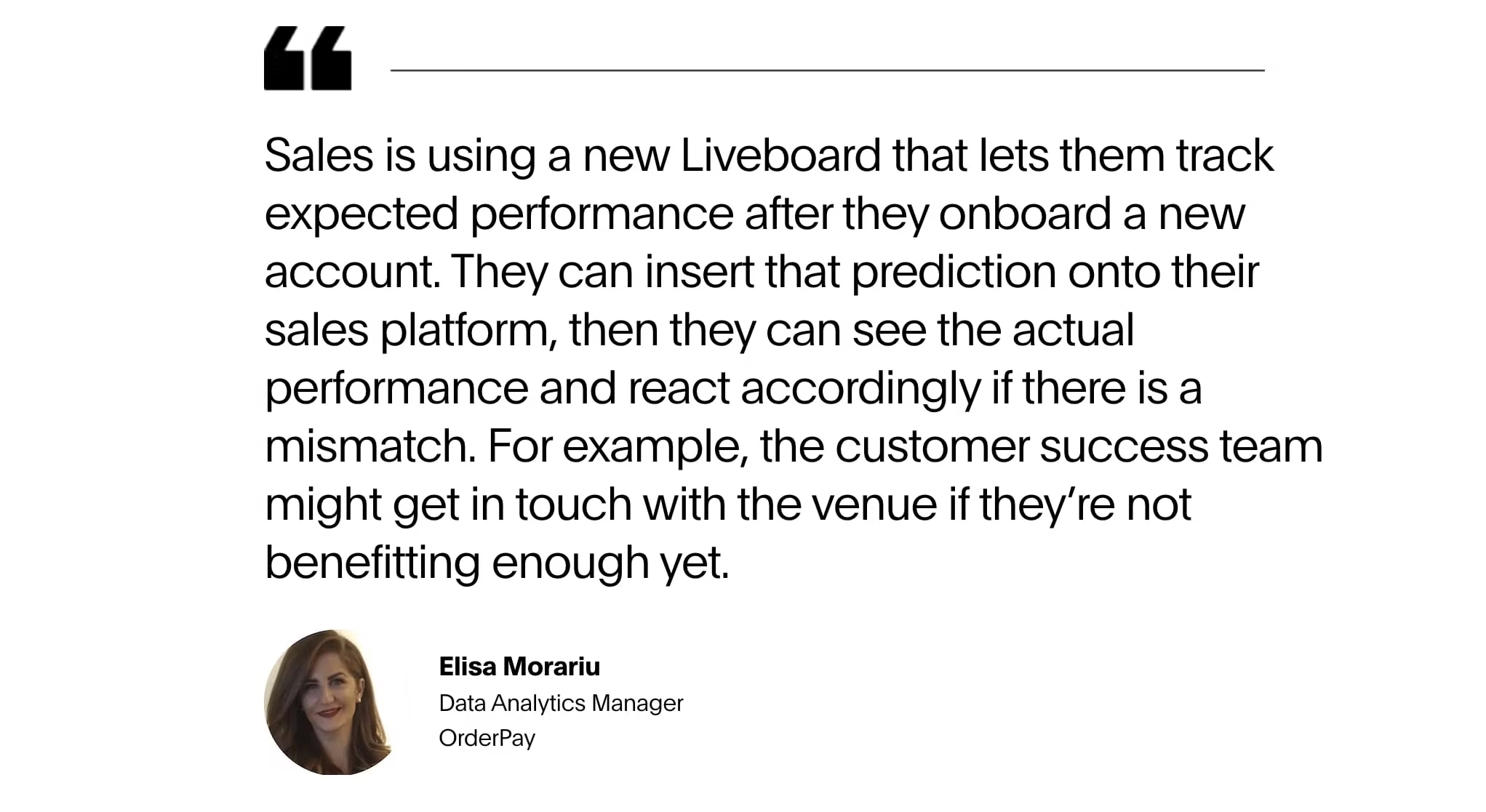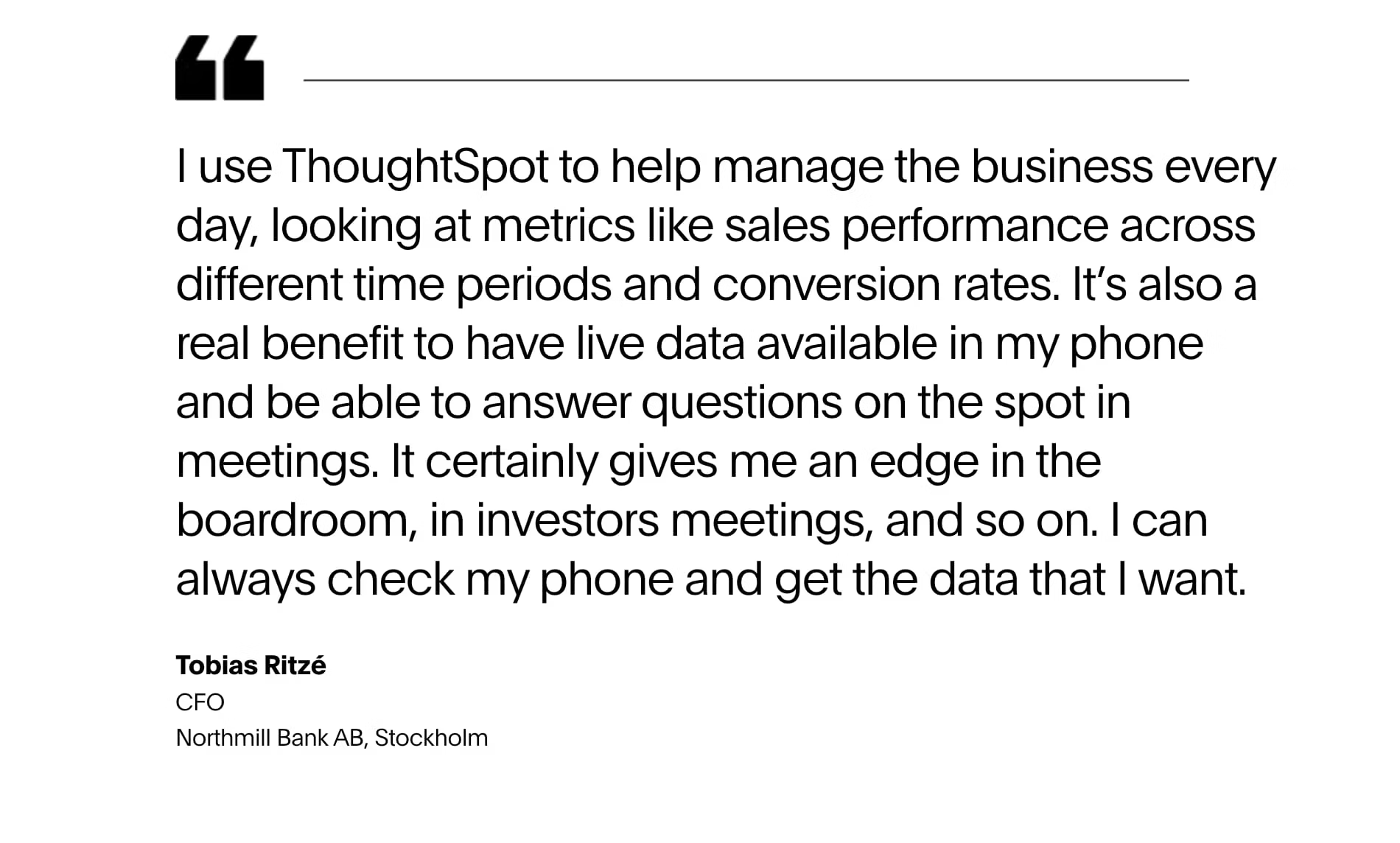It is an exciting time for businesses. Instead of relying on static, lifeless dashboards that take too long to create and barely provide value, companies are breaking the paradigm. By leveraging AI analytics and interactive dashboards, business users can discover hidden insights and capture opportunities—without compromising security and compliance.
Armed with the right information, your team can confidently make data-driven decisions and find new growth opportunities. So whether you're charting sales triumphs or orchestrating project progress like a data maestro, this guide is your golden ticket to turning static data into engaging, actionable insights for your team.
Table of contents:
Interactive dashboards are dynamic, real-time data visualizations that allow users to explore, analyze, and interact with complex datasets. Unlike static dashboards, interactive ones facilitate a hands-on approach, empowering users to customize visualizations, monitor KPIs in real-time, drill down into data, and tell great data stories.
Drill downs
Drill down features help you delve into the nitty-gritty of the data. Instead of viewing information at a high level, you can explore specific data points, categories, and time periods through point-and-click. This engaging approach encourages users to identify trends, patterns, and insights.
Customization options
To tell a compelling data story, you need to tailor your visualizations to the stakeholder’s understanding and preferences. You also need to choose the best-fit visualization in order to analyze the data accurately.
Thankfully, modern data analytics tools come with multiple customizable options that allow you to personalize the look and feel of your business dashboards, including colors, widgets, and charts. You can design your dashboards in a way that allows you to showcase your findings in an easy-to-understand format to ensure the audience is focused on what really matters.
AI-assistance
By now, we know that AI-Powered Analytics is no longer a fad but a game-changer. By choosing a tool with AI-powered capabilities like ThoughtSpot’s SpotIQ, you can get AI-powered answers and recommendations, identify leading indicators, create visualizations, and more. This drives more business value and allows you to get to the ‘why’ faster and focus more on hidden sights.
Real-time collaboration
If you’ve ever waited hours or days to find critical reports, this one’s for you. Interactive dashboards allow real-time collaboration, facilitating a greater understanding of data and a faster feedback cycle. With shared access, users can leave comments, view specific charts, and gain granular insights, to power informed decision-making across your team or organization.
While the advantages of interactive dashboards are clear, their true potential becomes even more evident when we look at real-world examples. Read how successful businesses are using interactive dashboards to drive real business outcomes:
1. Wellthy building data literacy with real-time data
Wellthy is a company that provides personalized support to help people navigate the logistic and administrative tasks associated with caregiving. However, the company was facing issues with its legacy BI platform. It extensive Python and SQL input, it restricted business users from unleashing the power of data.
With an intuitive analytics and BI solution like ThoughtSpot, Wellthy’s team can now visualize real-time data, filter and drill into specific searches, and pin charts to custom Liveboards just like the example below. This helped the company save over $200k and build a culture of data literacy, empowering every user to interact with data and make informed decisions.
2. OrderPay empowers teams to make data-driven decisions
OrderPay offers a mobile solution that simplifies the ordering, payment, and tipping process for customers at restaurants and hospitality venues. But as a growing company, OrderPay wanted a true self-service analytics solution that allows users in Sales, Marketing, Product, Customer Support, and Operations to play their part in scaling the business.
Luckily, ThoughtSpot’s intuitive interface and consumer-grade UX helps OrderPay teams build interactive dashboards with just a few clicks. Real-time visualizations and drillable filters help leaders track critical metrics and compare performance, increasing efficiency across the organization. Today, more than 70% of the company’s users log on and explore data to find hidden insights.
Here’s what Elisa Morariu, Data Analytics Manager at OrderPay, has to say about the importance of having an interactive dashboard:

3. Northmill uses interactive dashboards to boost conversion rate
With 400,000+ end-users and counting, Northmill aims to simplify financial complexities for people by leveraging technology. But to achieve this vision, the company was looking for a way to democratize data access to the point where everyone could explore insights and make data-driven decisions.
Their previous BI tool was slow to surface reliable KPI data and too complex to navigate for business users. By switching to an intuitive platform like ThoughtSpot, Northmill’s users can now monitor crucial KPIs in real-time and uncover insights that helped them boost the conversion rate by 30%.
Talking about data democratization, here’s what Tobias Ritzé, former CFO at Northmill Bank has to say:

Interactive dashboards are designed to increase user engagement and adoption by meeting users where they are. However, to get there, there are a few things to keep in mind:
1. Choose the right visualization tool
As data grows exponentially, you need a scalable, user-friendly data visualization tool with AI capabilities that enable everyone to access data and find valuable insights. Make sure that the dashboard tool lets you explore data and customize your dashboard. Also, check if it allows you to monitor your KPIs on mobile. This will help you and your team stay on the pulse of the business.
2. Define the goal
Before building your dashboards, it is crucial to outline the main objectives. By understanding the problem you are trying to solve, you can avoid confusion and think about what you want your dashboard to look like.
3. Identify the data that matters
The value of a dashboard is directly tied to the data it holds. To effectively track your project’s progress or your campaign’s outcome, find the relevant dataset. Because every dashboard serves a different purpose, identify which KPIs or datasets align with your business objectives and then connect them to your visualization tool.
4. Strike a balance
While visuals help us process information faster, adding too many can be distracting. Aim for a well-balanced design that incorporates visual hierarchy and an appealing color palette. By keeping your dashboard design simple and clutter-free, you can highlight important trends and patterns, encouraging viewers to dive deeper.
5. Create a story
Stories provide more meaning and context to the data. By weaving a compelling narrative with facts, you can present your point effectively and foster user engagement. Try to arrange visualizations and insights that lead the audience from one point to the next and add context wherever necessary. There is also an opportunity to add an appropriate summary that clearly articulates the implications of the data and suggests potential actions.
Interactive dashboards are immensely important for finding actionable insights that allow you to identify new growth opportunities and areas of improvement Despite this need, leaders are still relying on age-old, dead dashboards.
Join the ranks of successful businesses that drive business value with data. With a modern BI tool like ThoughtSpot, you can create interactive dashboards with just a few clicks and drill endlessly into data to uncover hidden insights.
Take a free trial of ThoughtSpot to see how you can leverage the AI-Powered Analytics to build engaging Liveboards.









